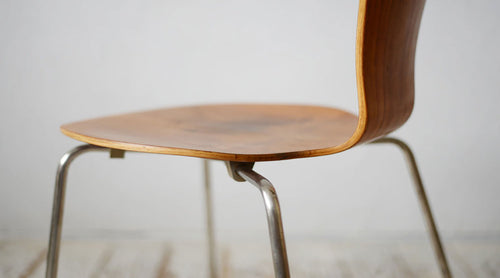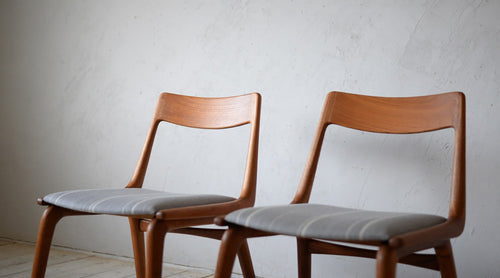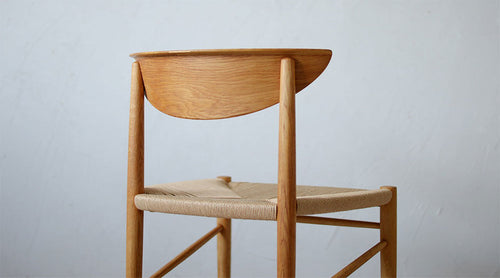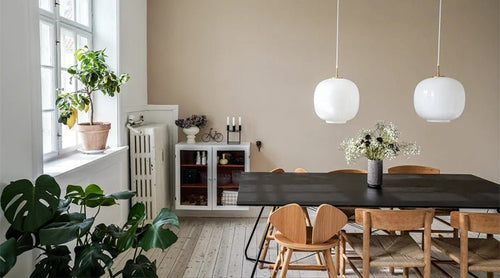Want to make the atmosphere of your room more fashionable and to your liking? You can do this by buying new furniture or changing the color of the walls, but a more casual and easy way is to reconsider your lighting. How to arrange the lighting, where to direct the light, and how to combine them. By being conscious of light and shadow, you can dramatically change the impression of a room.
This time, we will focus on "indirect lighting" and show you how to create a comfortable space.
The appeal of indirect lighting
What is indirect lighting?
Light can be broadly divided into three types: direct light, diffuse light, and indirect lighting. Light that hits directly from the light source is direct light, light that is diffused through a shade or other object is called diffuse light, and lighting that hits a wall or other object and spreads the light is called indirect lighting.
Light sources that are not visible and are covered with a shade are sometimes called "indirect lighting," but strictly speaking this is not the case. More precisely, it refers to light that is created by reflecting light off something, regardless of whether it is covered with a shade or not.
Appeal 1: The impression of the space changes dramatically
Unlike task lamps, which do not illuminate a specific area, indirect lighting shines light onto walls and other surfaces, creating spots of light within a room. This creates another "room" in one room, created with light, allowing you to dramatically change the impression of a space without making major changes, and is recommended for interior design beginners.
Charm 2: Makes the room look larger
Indirect lighting creates spots of light in a space. By illuminating corners of a room and other places where light normally does not reach, it can guide your attention to places you may not have paid attention to before, making the space visually feel larger than it actually is. It is also recommended for people who want to relax in their own room.
Reason 3: You can start at a low cost by simply arranging the lighting you already have.
As long as you can illuminate the walls and floors, you can also make use of existing lighting. For example, you can create indirect lighting by simply changing the layout or orientation of a table lamp, such as arranging it so that it illuminates the walls or floor instead of the light in front of you, or by changing the direction of the shade of a floor lamp. Indirect lighting is also placed behind interior items and creates light by reflecting it, so it can be created by combining LED lights and light bulbs without shades. Another attractive feature is that it can be started at a low cost compared to decorative lighting, where the lighting itself is the main focus.
How to avoid mistakes when choosing lighting

Indirect lighting is also recommended for beginners, but for us Japanese, who have a strong cultural belief that "lighting = something to shine brightly," it may be a little difficult to imagine incorporating lighting as interior design. On the other hand, people in Northern Europe have a long history of valuing light as something that enriches our lives, and they consider both "design and function" when choosing lighting.
When people in Scandinavia think about the interior design of their rooms, they choose based on "how they want to spend their time," not "how they want to be seen." By choosing lighting based on "where in the room do you want more light," rather than on whether the lighting matches the rest of the interior, you can create a "light balance" with the existing lighting and create a space that feels truly comfortable.
Of course, choosing lighting that you like is important, but if you do that too much, the room will not be bright enough and will be difficult to spend time in. Not only is a room with inappropriate lighting uncomfortable, but it can also lead to headaches and fatigue as you struggle to see small details. Trying to see things in the dark makes it difficult to concentrate, which affects your perseverance and motivation. It is important to incorporate lighting that is suitable for you, not only to be able to see well, but also to spend your time in a good mood.
How to choose the right indirect lighting
So how can you incorporate indirect lighting to create a comfortable space? Here are five key points.
1. Create a "room within a room"
If you brightly light up the entire room, the light will spread flatly and the room will lack dynamism. Think about where you want the light and how you will spend your time in the room, and arrange indirect lighting to create a "room within a room." By considering the direction of the light, you can create partitions and individual spaces even in rooms with an open floor plan.
② Balance with direct and diffuse lighting
When incorporating indirect lighting, it is also important to balance different types of light, such as direct and diffused. It is said that each room needs at least 5 to 7 light sources. The following four categories are used as a reference for arranging indirect lighting, direct light, and diffused light in a balanced manner without bias in the numbers. Select lighting so that there is at least one item from each category.
(1) General lighting: Ceiling lamps and lighting fixtures that spread basic light throughout the room.
(2) Task lighting: reading lights for armchairs and sofas, lighting for kitchen counters and desks.
(3) Point Lighting: Accent lighting or spotlights, such as for illuminating a wall frame, artwork, or bookshelf, or for casting a shadow pattern on the wall.
(4) Mood lighting: Lamps for creating an atmosphere, small dimmable lamps, chain lights, etc. Lighting that uses flames as a light source, such as lanterns and oil lamps.

3) Consider the difference in height of light
Just as important as the number of lights is creating a difference in the height of the light. We recommend varying the height of the lights so that the light sources are not all in a straight line, and using a variety of lights such as spotlights, uplights, and downlights. Analyze the lighting in the room using the following rule of "mountain, sea, or something in between" and see which heights have a lack or excess of light.
・Mountain items: ceiling lights, ceiling downlights, pendant lamps, etc.
- Intermediate: Floor lamps, reading lamps, table lamps, wall spotlights, etc.
- Sea-related items: low floor lamps, candles on sofa tables, floor lights, etc.
4. Be careful of reflective wall and floor materials
Indirect lighting creates light by shining light onto other objects such as walls and floors, so you need to be careful about the material of the reflective object. For example, if the floor you are illuminating is too shiny, the light will be too dazzling and hurt your eyes. In order to create a comfortable space, it is important to pay attention to the quality of the light.
⑤Choose lighting made in Scandinavia
People in Scandinavia have a keen sense of light. Long winters, long nights, and a lot of rain and snow mean that people in Scandinavia spend a lot of time indoors, which is one of the reasons why they understand firsthand how important light is to humans. That's why many Scandinavian-made lights are designed not just to look good, but also to allow people to see what's around them clearly, with the light being balanced in the space. If you're looking to incorporate lighting to create a comfortable space, we recommend choosing items from Scandinavia.
Recommended indirect lighting
From here, we will introduce some recommended indirect lighting. We have selected them from 101COPENHAGEN, a brand from Scandinavia that has a wide range of items that can be used as indirect lighting.

This ceiling-mounted chandelier features arms and lampshades that can be freely adjusted in direction. It can be used to illuminate a table as direct light or to illuminate the ceiling as indirect light, allowing you to create multiple lights with just one unit. It comes in two sizes and a wide variety of colors, allowing you to choose the one that best suits your space.

A tall floor lamp. The metal shade can be rotated to change the direction of the light. By facing the light source toward the wall, it can be used as indirect lighting to illuminate the wall. The design is inspired by Japanese lanterns, and although it was born in Scandinavia, it is an item that fits easily into a Japanese room.

A low-profile floor lamp. The two overlapping circular shades diffuse light in 360 degrees, making it an item that can be used not only as a diffused light, but also as an indirect light for the floor. The sophisticated design and texture of the material make it an attractive piece that can also be used as an objet d'art without the light during the day.

As the name "Clam" suggests, this table lamp has two shades that rotate facing each other like a shell. It is an item that can be used flexibly as both indirect and direct lighting. When placed on a windowsill, it creates a spot of light that illuminates the entire window sill.

This spotlight's small size and sophisticated design make it easy to incorporate into any room. Not only can it be used to highlight art, accessories, and other points in a space you want to emphasize, but it can also be used as indirect lighting to create a contrast between light and shadow by illuminating walls and floors.
Conclusion
What do you think about creating a space using indirect lighting? Most of the items we introduced as recommended indirect lighting are freestanding and do not require any complicated construction, so you can use them just by plugging them into an outlet.
Why not take a look at a few points based on Nordic thinking and enjoy creating a space that is not only stylish but also truly comfortable?
Public Relations: Okada














